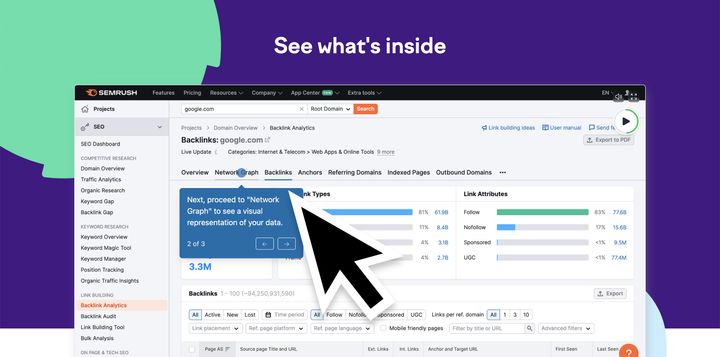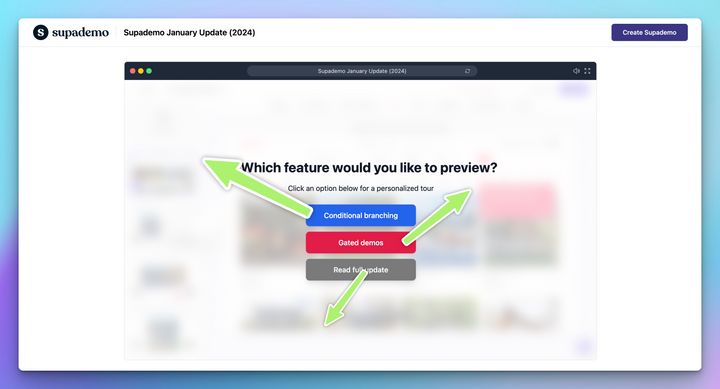Customer retention is a critical aspect of any business, and it holds particular importance for SaaS sellers. With the potential for long-term contracts and the opportunity to upsell additional features and services, retaining customers is essential for driving consistent revenue. In this comprehensive guide, we will explore the benefits of customer retention, discuss the customer retention formula, and provide you with 15 effective strategies to keep your SaaS customers coming back for more.
Retention vs. Acquisition
Before delving into the strategies, let's first understand the significance of customer retention and acquisition. While acquiring new customers is important for business growth, it's crucial not to overlook the value of retaining existing clients.
Acquiring new customers can be six to seven times more expensive than retaining current ones. Additionally, retained customers tend to spend more than new customers and have a better understanding of your product's value. Surprisingly, a mere 5% increase in customer retention rates can lead to a substantial boost in company revenue, ranging from 25% to 95%.
In other words, while customer acquisition may offer a moderate revenue increase, customer retention provides greater value at a lower cost.
What is a Customer Retention Rate?
Customer retention rate is a measure of how many customers stay with your business over a specific period of time. It indicates the effectiveness of your efforts to retain customers and build long-term relationships.
To calculate the customer retention rate, use the following formula:
Customer Retention Rate = ((Number of Customers at the End of a Period - Number of New Customers Acquired during the Period) / Number of Customers at the Start of the Period) x 100
For example, if you started with 75 customers, acquired 25 new customers, and ended up with a total of 85 customers at the end of the measurement period, your customer retention rate would be:
((85 - 25) / 75) x 100 = 80%
The closer your retention rate is to 1 (or 100%), the better.
SaaS Customer Retention Strategies
Now that we understand the importance of customer retention, let's explore 15 effective strategies to keep your SaaS customers loyal and engaged.
1. Set Clear Expectations
One of the fundamental customer retention strategies is setting clear expectations. Transparency is key in building trust and ensuring customer satisfaction. Clearly communicate what customers can expect from your product or service, how it will be delivered, and the response time for any inquiries or support tickets. Establishing a service-level agreement (SLA) can be instrumental in managing customer expectations and fostering long-term relationships.
2. Provide an "Aha" Experience
To retain customers, you need to provide them with an "aha" moment that showcases the value of your SaaS solution. This moment of clarity should occur during the onboarding process, where you guide new customers and help them quickly tap into the key benefits of your product. Tutorials, knowledge bases, and personalized onboarding experiences can all contribute to creating this "aha" moment and solidifying the value proposition of your SaaS offering.
3. Contextualize Your Offering
To differentiate yourself from competitors and avoid unfavorable comparisons, it's crucial to contextualize your SaaS offering. Clearly define your target audience and highlight the unique aspects of your solution that set it apart from others in the market. By providing context and emphasizing your niche expertise, you can attract customers who align with your product's specific value proposition.
4. Offer Connected Upsells
Upselling is an effective way to increase revenue from retained customers. However, it's essential to offer upsells that are relevant to their needs and align with the features they are already utilizing. Tailor your upsell offerings to complement your customers' existing usage patterns and provide value-add options that enhance their overall experience with your SaaS solution.
5. Create a Communication Schedule
Maintaining regular communication with your customers is vital for building strong relationships and preventing churn. Establish a communication schedule that includes check-ins to ensure everything is working as intended and to address any concerns or feedback. By proactively engaging with your customers, you demonstrate ongoing commitment to their success and satisfaction.
6. Keep Your Product Current
SaaS solutions need to evolve and adapt to changing market trends and customer needs. Regularly update your product to introduce new features, improve functionality, and address any bugs or issues. Communicate these updates to your customers, highlighting the value they bring and any potential downtime or service interruptions. By keeping your product current, you show your commitment to continuous improvement and customer satisfaction.
7. Go Above and Beyond
Delivering exceptional customer service is crucial for customer retention. Aim to go above and beyond by anticipating customer needs, providing personalized support, and addressing any pain points they may encounter. By exceeding expectations, you not only retain customers but also create loyal advocates who can positively impact your brand through word-of-mouth referrals.
8. Consider a Rewards Program
Rewarding customer loyalty is an effective way to foster long-term relationships. Consider implementing a rewards program that offers incentives for continued usage or referrals. For example, you could provide discounts based on the length of the service contract or offer referral bonuses for customers who introduce new clients to your SaaS solution. Rewards programs incentivize retention and encourage customers to remain engaged with your product.
9. Reduce Friction Wherever Possible
Friction in the customer experience can lead to frustration and ultimately drive customers away. Identify areas where friction may occur within your SaaS solution and take steps to reduce it. Implement tools such as form autofill to streamline processes, ensure compatibility with other as-a-service apps, and optimize user interfaces for intuitive navigation. By minimizing friction, you create a seamless experience that encourages customer loyalty.
10. Collect and Act on Feedback
Feedback from your customers is invaluable for understanding their needs and improving your product and service offerings. Regularly collect feedback through surveys, post-purchase forms, and direct communication. Analyze the feedback to identify trends, address any shortcomings, and enhance the customer experience. By actively listening to your customers and implementing changes based on their feedback, you demonstrate your commitment to their satisfaction.
11. Build a Product Community
Leverage the power of community by creating a space for your customers to connect and share their experiences. Establish a product community that includes knowledge bases, forums, and tutorials where users can access and contribute valuable information. This not only provides additional resources for your customers but also cultivates a sense of belonging and loyalty to your brand.
12. Track Your KPIs
To effectively measure customer retention, it's essential to track key performance indicators (KPIs). Monitor metrics such as customer retention rate, customer churn rate, reasons for customer attrition, and your search engine ranking compared to competitors. By regularly analyzing these KPIs, you can identify areas for improvement, optimize your retention strategies, and make data-driven decisions to enhance customer loyalty.
13. Leverage Data from Customers Who Leave
Even with strong retention efforts, some customers may choose to leave. Instead of letting them go without gathering insights, ask for feedback on their departure. Understand their reasons for leaving, identify any service gaps or shortcomings, and explore opportunities for improvement. This valuable data can help you refine your strategies, address common pain points, and potentially win back lost customers in the future.
14. Make Self-Service Possible
Empower your customers by providing self-service options that enable them to troubleshoot and resolve issues independently. Offer in-depth manuals, tutorials, and an in-app knowledge base that address common queries and provide step-by-step guidance. By enabling self-service, you enhance the overall customer experience and reduce their reliance on support resources.
15. Personalize Your Product Offerings
Recognize the unique needs and preferences of your customers by personalizing your product offerings. While your SaaS solution may have a general purpose, take the time to understand each customer's specific use case. Explore opportunities for customization or tailored features that align with their requirements. By delivering personalized experiences, you strengthen customer relationships and increase their long-term satisfaction.
Conclusion
Customer retention is a journey that requires a comprehensive approach. By implementing these 15 strategies, you can optimize your SaaS customer retention efforts and drive sustainable revenue growth. Remember to set clear expectations, provide outstanding experiences, and continuously communicate with your customers to foster long-lasting relationships. With a focus on customer retention, your SaaS business can thrive in a competitive market and achieve sustained success.




